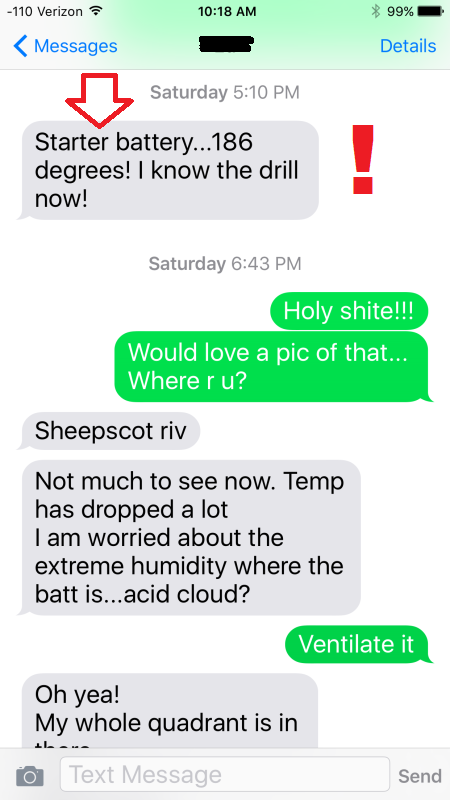Most 12V "marine" flooded batteries are simply cheap imposters and not a true
deep cycle product. In other words they are deep cycle in name only.
I actually posed the below question to one of the major US battery manufacturers of both marine "deep cycle" and golf, RE and industrial deep cycle batteries:
Question asked by MarineHowTo.com:
"If the GC2, GC-12 or L16's were cycled using the same cycle life testing as the 12V Group 24, 27, 31 etc. what would that outcome, in cycle life, actually look like? Is it fair to suggest a GC2, GC12 or L16 battery has double to triple the lab cycle life, to 50% DOD, than the 12V 24, 27 & 31
"deep cycles" do?"
Senior Battery Engineer - Major US Battery Manufacturer:
"Yes, for packs of equivalent energy content (voltage * capacity) the Golf Car types and L16's are 2-3 times better than the DC automotive sizes (24, 27 and 31)."
A typical GC-2, or golf car battery, is intended and specifically designed for daily deep cycling where as a 12V Group 24, 27, 29, 30, 31 & most 4D and 8D flooded batteries (Rolls & Dyno being the only exception I know of) are really lightly built "dual purpose" automotive grade batteries that don't cycle nearly as well. Trojan puts their 12V "marine" batteries SCS-150 (G-24), SCS-200 (G-27) & SCS-225 (G-31) at just half the cycles of their T-105 or T1275 golf car batteries.
When buying batteries it is not just $$ per Ah it is cost per Ah plus expected cycle life that yields the best value. It's pretty hard to beat a 6V GC-2 battery in an Ah's to $$ to cycles number crunch game.
That said there are also 12V golf car and industrial sweeper scrubber batteries available too such as Trojan's J150, T1275 or J185 and East Penn, US Battery, Crown and others also offer a GC12 (golf car 12V) or J185 type form factor.
Another advantage of using series/parallel, to build capacity, is that you have less batteries wired in parallel which reduces your chances of an internal short leading to thermal run-away.
When you get frantic text messages like this, from your customers, you tend to think about these things more than a DIY..
Below is an example of a bank of 6 Trojan T1275's, 900Ah's of parallel 12V golf car batteries, that had one short internally (they were well beyond their useful life though). This means the owner had the inverter/charger plus 750 Ah's of parallel batteries all trying to charge the one battery that was now a 10V battery. 154F is simply dangerous!!

While these deep cycle golf car batteries lasted an exceptional 6.5 years, on a 24/7/365 world cruising boat, I am not a big fan of this many batteries in parallel for this exact reason. This was not my design, wiring or installation, I inherited it. A series/parallel bank would have reduced the number of paralleled batteries that could thermally run away in the event of a cell shorting.
Sadly the marine charging industry has failed us on
safely charging parallel batteries by supplying just one battery temp sensor per charger or charge source. A real joke and a travesty. While some do have the option of two temp sensors this is rare.
House load demands are getting larger and larger yet the marine charging industry has done NOTHING to address the safety issues of paralleled batteries such as temp sensor options for
each battery..







